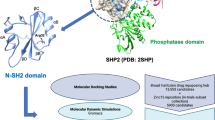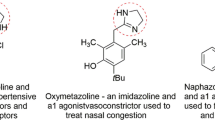Abstract
In the work described here, we developed the first multi-target quantitative structure–activity relationship (QSAR) model able to predict the results of 42 different experimental tests for GSK-3 inhibitors with heterogeneous structural patterns. GSK-3β inhibitors are interesting candidates for developing anti-Alzheimer compounds. GSK-3β are also of interest as anti-parasitic compounds active against Plasmodium falciparum, Trypanosoma brucei, and Leishmania donovani; the causative agents for Malaria, African Trypanosomiasis and Leishmaniosis. The MARCH-INSIDE technique was used to quickly calculate total and local polarizability, n-octanol/water partition coefficients, refractivity, van der Waals area and electronegativity values to 4,508 active/non-active compounds as well as the average values of these indexes for active compounds in 42 different biological assays. Both the individual molecular descriptors and the average values for each test were used as input for a linear discriminant analysis (LDA). We discovered a classification function which used in training series correctly classifies 873 out of 1,218 GSK-3 cases of inhibitors (97.4%) and 2,140 out of 2,163 cases of non-active compounds (86.1%) in the 42 different tests. In addition, the model correctly classifies 285 out of 406 GSK-3 inhibitors (96.3%) and 710 out of 721 cases of non-active compounds (85.4%) in external validation series. The result is important because, for the first time, we can use a single equation to predict the results of heterogeneous series of organic compounds in 42 different experimental tests instead of developing, validating, and using 42 different QSAR models. Lastly, a double ordinate Cartesian plot of cross-validated residuals (first ordinate), standard residuals (second ordinate), and leverages (abscissa) defined the domain of applicability of the model as a squared area within ±2 band for residuals and a leverage threshold of h = 0.0044.
Similar content being viewed by others
References
Olson RE (2000) Secretase inhibitors as therapeutics for Alzheimer’s disease. Ann Rep Med Chem 35: 31–40. doi:10.1016/S0065-7743(00)35005-9
Woodgett JR (1990) Molecular cloning and expression of glycogen synthase kinase-3/factor A. EMBO J 9: 2431–2438
Woodgett JR (1991) cDNA cloning and properties of glycogen synthase kinase-3 methods. Enzymol 200: 564–577. doi:10.1016/0076-6879(91)00172-S
Ali A, Hoeflich KP, Woodgett JR (2001) Glycogen synthase kinase-3: properties, functions, and regulation. Chem Rev 101: 2527–2540. doi:10.1021/cr000110o
Ishiguro K, Ihara Y, Uchida T, Imahori K (1988) A novel tubulin-dependent protein kinase forming a paired helical filament epitope on tau. J BioChem 104(3): 319–321
Fairlamb AH (2003) Chemotherapy on human African trypanosomiasis: current and future prospects. Trends Parasitol 19: 488–494. doi:10.1016/j.pt.2003.09.002
Plyte SE, Hughes K, Nilkolakaki E, Pulverer BJ, Woodgett JR (1992) Glycogen synthase kinase-3: functions in oncogenesis and development. Biochim Biophys Acta 1114: 147–162. doi:10.1016/0304-419X(92)90012-N
Ojo KK, Gillespie RG, Riechers A, Napuli AJ, Verlinde CL, Buckner FS et al (2008) Glycogen synthase kinase 3 is a potential drug target for african trypanosomiasis therapy.AntimicrobAgents Chemother 3710–3717
Freund JA, Poschel T (2000) Stochastic processes in physics, chemistry, and biology (lecture notes in physics). Springer-Verlag, Berlin
Estrada E, Uriarte E (2001) Recent advances on the role of topological indices in drug discovery research. Curr Med Chem 8: 1573–1588. doi:10.2174/0929867013371923
Estrada E, Uriarte E, Montero A, Teijeira M, Santana L, De Clercq E (2001) A novel approach for the virtual screening and rational design of anticancer compounds. J Med Chem 43: 1975–1985
Prado-Prado FJ, Borges F, Perez-Montoto LG, Gonzalez-Diaz H (2009) Multi-target spectral moment: QSAR for antifungal drugs vs. different fungi species. Eur J Med Chem 44: 4051–4056. doi:10.1016/j.ejmech.2009.04.040
González-Díaz H, Torres-Gomez LA, Guevara Y, Almeida MS, Molina R, Castanedo N et al (2005) Markovian chemicals “in silico” design (MARCH-INSIDE), a promising approach for computer-aided molecular design III: 2.5D indices for the discovery of antibacterials. J Mol Model 11: 116–123. doi:10.1007/s00894-004-0228-3
Gonzalez-Díaz H, Prado-Prado F, Ubeira FM (2008) Predicting antimicrobial drugs and targets with the MARCH-INSIDE approach. Curr Top Med Chem 8: 1676–1690. doi:10.2174/156802608786786543
Santana L, Uriarte E, González-Díaz H, Zagotto G, Soto-Otero R, Mendez-Alvarez E (2006) A QSAR model for in silico screening of MAO-A inhibitors. Prediction, synthesis, and biological assay of novel coumarins. J Med Chem 49: 1149–1156. doi:10.1021/jm0509849
Concu R, Dea-Ayuela MA, Perez-Montoto LG, Bolas-Fernandez F, Prado-Prado FJ, Podda G et al (2009) Prediction of enzyme classes from 3D structure: a general model and examples of experimental-theoretic scoring of peptide mass fingerprints of Leishmania proteins. J Proteome Res 8: 4372–4382. doi:10.1021/pr9003163
Kutner MH, Nachtsheim CJ, Neter J, Li W (2005) Standardized multiple regression model. Applied linear statistical models, 5th edn. McGraw Hill, New York, pp 271–277
Hall Ca (1996) The Merck Index, 12th ed. Merck & Co, New Jersey
Van Waterbeemd H (1995) Discriminant analysis for activity prediction. In: Van Waterbeemd H (ed) Chemometric methods in molecular design. Wiley-VCH, New York, pp 265–282
Konda VR, Desai A, Darland G, Bland JS, Tripp ML (2009) Rho iso-alpha acids from hops inhibit the GSK-3/NF-kappaB pathway and reduce inflammatory markers associated with bone and cartilage degradation. J inflamm (Lond) 6: 26–34. doi:10.1186/1476-9255-6-26
Jacquemard U, Dias N, Lansiaux A, Bailly C, Loge C, Robert JM et al (2008) Synthesis of 3,5-bis(2-indolyl)pyridine and 3-[(2-indolyl)-5-phenyl]pyridine derivatives as CDK inhibitors and cytotoxic agents. Bioorg Med Chem 16: 4932–4953
Olesen PH, Sorensen AR, Urso B, Kurtzhals P, Bowler AN, Ehrbar U et al (2003) Synthesis and in vitro characterization of 1-(4-aminofurazan-3-yl)-5-dialkylaminomethyl-1H-[1,2,3]triazole-4-carboxyl ic acid derivatives. A new class of selective GSK-3 inhibitors. J Med Chem 46: 3333–3341. doi:10.1021/jm021095d
Calabuig C, Anton-Fos GM, Galvez J, Garcia-Domenech R (2004) New hypoglycaemic agents selected by molecular topology. Int J Pharm 278: 111–118. doi:10.1016/j.ijpharm.2004.03.012
Cercos-del-Pozo RA, Perez-Gimenez F, Salabert-Salvador MT, Garcia-March FJ (2000) Discrimination and molecular design of new theoretical hypolipaemic agents using the molecular connectivity functions. J Chem Inf Comput Sci 40: 178–184. doi:10.1021/ci9900480
Murcia-Soler M, Perez-Gimenez F, Garcia-March FJ, Salabert-Salvador MT, Diaz-Villanueva W, Medina-Casamayor P (2003) Discrimination and selection of new potential antibacterial compounds using simple topological descriptors. J Mol Graph Model 21: 375–390. doi:10.1016/S1093-3263(02)00184-5
Estrada E, Vilar S, Uriarte E, Gutierrez Y (2002) In silico studies toward the discovery of new anti-HIV nucleoside compounds with the use of TOPS-MODE and 2D/3D connectivity indices. 1. Pyrimidyl derivatives. J Chem Inf Comput Sci 42: 1194–1203. doi:10.1021/ci0255331
Cronin MT, Aptula AO, Dearden JC, Duffy JC, Netzeva TI, Patel H et al (2002) Structure-based classification of antibacterial activity. J Chem Inf Comput Sci 42: 869–878. doi:10.1021/ci025501d
Prado-Prado FJ, Ubeira FM, Borges F, Gonzalez-Diaz H (2010) Unified QSAR & network-based computational chemistry approach to antimicrobials. II. Multiple distance and triadic census analysis of antiparasitic drugs complex networks. J Comput Chem 31: 164–173. doi:10.1002/jcc.21292
Prado-Prado FJ, Martinez de la Vega O, Uriarte E, Ubeira FM, Chou KC, Gonzalez-Diaz H (2009) Unified QSAR approach to antimicrobials. 4. Multi-target QSAR modeling and comparative multi-distance study of the giant components of antiviral drug-drug complex networks. Bioorg Med Chem 17: 569–575. doi:10.1016/j.bmc.2008.11.075
Oberg T (2004) A QSAR for baseline toxicity: validation, domain of application, and prediction. Chem Res Toxicol 17: 1630–1637. doi:10.1021/tx0498253
Gramatica P (2007) Principles of QSAR models validation: internal and external. QSAR Comb Sci 26: 694–701. doi:10.1002/qsar.200610151
Eriksson L, Jaworska J, Worth AP, Cronin MT, McDowell RM, Gramatica P (2003) Methods for reliability and uncertainty assessment and for applicability evaluations of classification- and regression-based QSARs. Environ Health Perspect 111: 1361–1375. doi:10.1289/ehp.5758
Tropsha A, Gramatica P, Gombar VK (2003) The importance of being earnest: validation is the absolute essential for successful application and interpretation of QSPR models. QSAR Comb Sci 22: 69–77. doi:10.1002/qsar.200390007
Melagraki G, Afantitis A, Sarimveis H, Koutentis PA, Kollias G, Igglessi-Markopoulou O (2009) Predictive QSAR workflow for the in silico identification and screening of novel HDAC inhibitors. Mol Divers. 13: 301–311. doi:10.1007/s11030-009-9115-2
Li J, Gramatica P (2009) The importance of molecular structures, endpoints’ values, and predictivity parameters in QSAR research: QSAR analysis of a series of estrogen receptor binders. Mol Divers. doi:10.1007/s11030-009-9212-2
Papa E, Villa F, Gramatica P (2005) Statistically validated QSARs, based on theoretical descriptors, for modeling aquatic toxicity of organic chemicals in Pimephales promelas (fathead minnow). J Chem Inf Model 45: 1256–1266. doi:10.1021/ci050212l
Liu H, Papa E, Gramatica P (2006) QSAR prediction of estrogen activity for a large set of diverse chemicals under the guidance of OECD principles. Chem Res Toxicol 19: 1540–1548. doi:10.1021/tx0601509
Gramatica P, Giani E, Papa E (2006) Statistical external validation and consensus modeling: a QSPR case study for K(oc) prediction. J Mol Graph Model 25: 755–766. doi:10.1016/j.jmgm.2006.06.005
Author information
Authors and Affiliations
Corresponding author
Electronic supplementary material
Rights and permissions
About this article
Cite this article
García, I., Fall, Y., Gómez, G. et al. First computational chemistry multi-target model for anti-Alzheimer, anti-parasitic, anti-fungi, and anti-bacterial activity of GSK-3 inhibitors in vitro, in vivo, and in different cellular lines. Mol Divers 15, 561–567 (2011). https://doi.org/10.1007/s11030-010-9280-3
Received:
Accepted:
Published:
Issue Date:
DOI: https://doi.org/10.1007/s11030-010-9280-3




